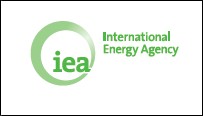New Pathways to Energy Efficiency

A lack of
technical capacity and know-how hinders many governments from
capitalising on the full potential of energy efficiency, according
to the International Energy Agency (IEA).
Over 40% of the 25 energy efficiency policy recommendations made
by the IEA two years ago have not yet been implemented, says the
agnecy. These recommendations alone could - if implemented globally
without delay - save 8.2 Gigatonnes (Gt) CO2 per year by 2030 (the
equivalent of twice the European Union’s current yearly
emissions).
A new IEA series
target=”_blank”>Policy Pathways: Showing the way to energy
efficiency implementation aims at closing this
implementation gap.
Presenting the new series today in Paris, IEA Executive Director
Nobuo Tanaka said, “Governments are missing a great opportunity to
save energy. Even the countries that are most proactive on energy
efficiency have implemented less than 60% of the IEA energy
efficiency recommendations! This shows that although clearly energy
efficiency can save energy and CO2 emissions at very little or no
cost, barriers remain for governments to put effective policies in
place”.
The Australian Secretary of the Department of Resources, Energy
and Tourism Drew Clarke who joined Mr. Tanaka on the panel said,
“This publication shows how countries can improve energy efficiency
in ways appropriate to their national and policy
circumstances.”
For example, implementing a policy that regulates refrigerator
energy efficiency levels requires a government to undertake a
series of actions such as establishing the technical testing
procedures, building testing laboratories, and/or training skilled
testing technicians. This all takes time, resources, and
experience.
The Policy Pathways series is about helping countries to
implement essential energy efficiency policies like refrigerator
energy performance standards. It provides policymakers with
practical ‘how-to’ guides for designing, implementing and
evaluating energy efficiency policies. In these times of austerity,
governments can conserve resources by benefiting from the
experiences and lessons learned by other countries.
Armed with this information from the Policy Pathway series, “we
hope countries will be better able to implement effective energy
efficiency policies - and, therefore, achieve greater energy
efficiency improvement,” said Mr. Tanaka.
“If you give a country an energy
efficiency recommendation, you hold their attention for a day. Help
a country to implement the recommendation, and you can launch
energy savings that last for years.” IEA Executive
Director Nobuo Tanaka
The first Policy Pathway in the series covers improving
compliance within appliance and equipment energy efficiency
programmes through monitoring, verification and enforcement (MVE).
The use of electricity by appliances in IEA countries accounts for
15% of total electricity consumption and is growing, particularly
in non-IEA countries.
Energy efficiency in lighting and appliances is estimated to
have a large energy-saving potential in the order of 306 Mtoe per
year by 2030. Furthermore, according to the IEA publication Energy
Technology Perspectives 2010 (ETP 2010) Blue Map Scenario, which
aims at halving CO2 emissions in 2050 compared to 2005 levels, the
bulk of these savings can be achieved in the short to medium-term.
Non-compliance in standards and labelling programmes could be as
high as 20% to 50% and so improving MVE is crucial to ensure
cost-effective energy savings are achieved. “
To make compliance a reality, we need to M-o-V-E now!” Mr.
Tanaka said.
Example of MVE from Australia:
Mandatory labelling requirements have been in place in Australia
since 1992 for major consumer appliances like refrigerators,
dishwashers, clothes washers and dryers. By the end of the 1990s,
only the most efficient products were on the market. In 2001
regulators decided to undertake a national survey to monitor
compliance with a new more stringent label.
Three national surveys of appliances for sale on retail showroom
floors have since been conducted. The surveys show a steady
improvement in compliance with the mandatory labelling requirement,
from 94% in 2001 improving to 98% on average across the nation in
2009. When the overall results for each survey were finalised,
government authorities not only reported the general outcome to the
wider community and store associations, but also wrote to each
examined store showing them their results in comparison to local
competitors.
Some of the poorest performing stores were formally warned about
breaching the labelling regulations and enforcement of
legalproceedings was taken against them. As a result of MVE
activities such as these, Australia now rivals the best reported
compliance rates in the world of this form of Standards and
labelling requirement.
The IEA plans a series of Policy Pathways that will focus on
implementing the 25 energy efficiency policy recommendations.
Following the release of the appliances MVE Pathway, the Agency
will be releasing a Pathway on building energy performance
certification in early November (at Singapore Energy Week) and
energy management in industry in spring 2011.
You can return to the main Market News page, or press the Back button on your browser.

